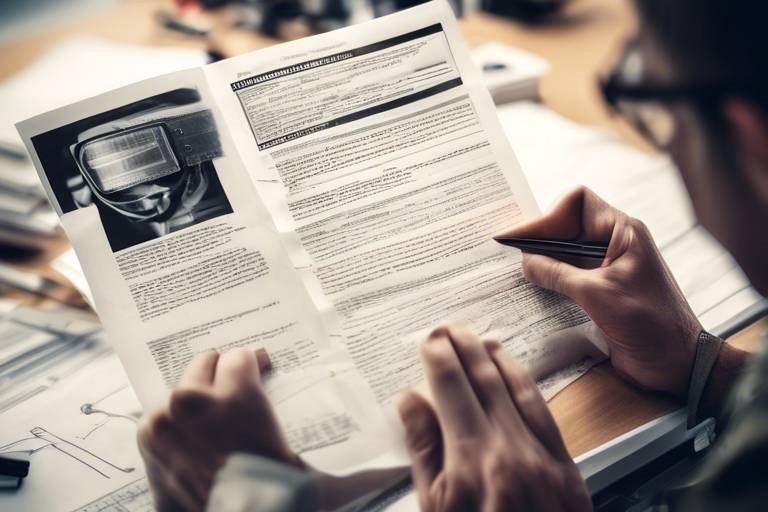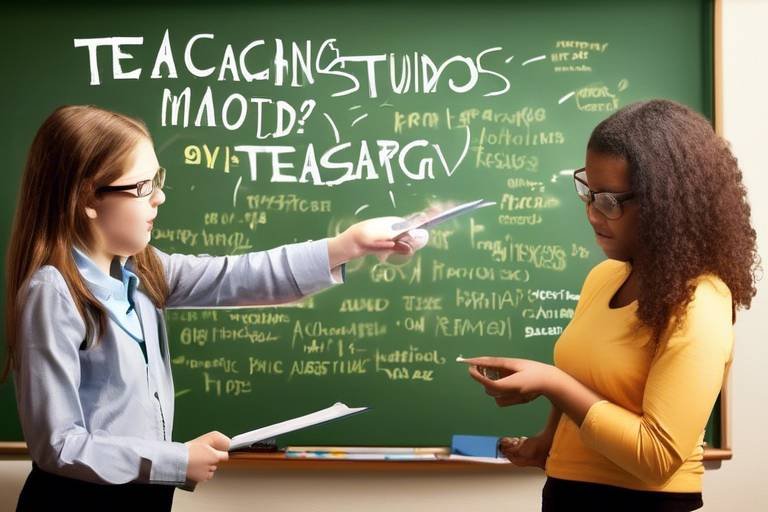The Role of Technical Documentation in Research Methodology
Technical documentation is the unsung hero of the research world. It’s like the backbone of a well-structured study, providing essential support that ensures everything runs smoothly. Imagine embarking on a road trip without a map or GPS—chaos, right? Similarly, without proper documentation, researchers can easily lose their way, leading to confusion and potentially flawed results. This article dives deep into the significance of technical documentation, exploring its myriad benefits, essential components, and best practices for effective implementation in various research contexts.
Understanding the critical role technical documentation plays in research methodology is like unlocking a treasure chest of clarity, reproducibility, and transparency in scientific studies. When researchers meticulously document their processes, they not only enhance the credibility and reliability of their findings but also pave the way for future studies. Think of it as laying down the tracks for a train; if the tracks are well-laid, the train can travel smoothly and efficiently. In research, this translates to:
- Clarity: Clear documentation helps everyone involved understand the research objectives and methods.
- Reproducibility: Other researchers can replicate the study, which is crucial for validating results.
- Transparency: Open documentation fosters trust within the scientific community and with the public.
Now that we’ve established why technical documentation is vital, let’s explore the different forms it can take. Each type serves a specific purpose in guiding researchers through their methodologies and ensuring compliance with standards. Here are some key types of technical documentation:
- Research Proposals: These outline the objectives, methodology, and significance of a study, providing a roadmap for researchers.
- Research Protocols: These detail the specific procedures and methodologies to be followed during a study.
- Reports: These summarize the findings and implications of the research conducted.
- Manuals: These provide guidelines and instructions for using specific tools or methodologies.
Research proposals are the first step in the research journey. They act as a blueprint, outlining the objectives, methodology, and significance of a study. A well-crafted proposal not only serves as a roadmap for researchers but also lays the groundwork for funding and ethical approvals. It's like pitching a movie idea; if you can’t convey the story compellingly, no one will want to invest in it. The proposal ensures alignment with research goals and sets the stage for what’s to come.
Key components of a research proposal include:
- Introduction: Sets the stage for the research, presenting the problem and its significance.
- Literature Review: Summarizes existing research relevant to the proposal.
- Methodology: Details the research design and methods to be used.
- Budget: Outlines the financial requirements of the research project.
Each of these components is critical in conveying the project's purpose and feasibility to reviewers and stakeholders.
Avoiding common pitfalls is essential for crafting a compelling research proposal. Mistakes, such as vague objectives or inadequate methodology descriptions, can undermine the proposal's effectiveness. Think of it like trying to bake a cake without a recipe; if you're not precise, the results can be disastrous. By clearly articulating the research goals and methods, researchers can effectively communicate the study's value and increase their chances of approval.
Research protocols are the detailed guides that outline the specific procedures and methodologies to be followed during a study. They ensure consistency and adherence to ethical standards throughout the research process. Imagine trying to assemble a complex piece of furniture without instructions; a protocol provides the necessary steps to avoid confusion and errors. By adhering to a well-structured protocol, researchers can maintain the integrity of their studies and ensure that results are valid and reliable.
Implementing best practices for technical documentation is crucial for enhancing the usability and accessibility of research documentation for all stakeholders. Some best practices include:
- Maintaining Clear Formatting: A well-organized document is easier to navigate.
- Using Standardized Terminology: This reduces ambiguity and confusion.
- Regular Updates: Keeping documentation current ensures that all stakeholders have access to the latest information.
In today’s research landscape, collaboration among researchers is more important than ever. Effective documentation practices enable seamless communication and shared understanding of methodologies, which is crucial for multi-disciplinary projects and team-based research. It’s like being part of a band; each member needs to know their part to create harmonious music. When everyone is on the same page, the research process is more efficient and productive.
Utilizing specialized tools and software for technical documentation can streamline the documentation process, improve organization, and facilitate easier sharing and collaboration among research teams. Just as a painter uses brushes and palettes to create a masterpiece, researchers can leverage technology to enhance their documentation efforts. Tools like project management software, cloud storage, and collaborative platforms can make a significant difference in how effectively researchers document their work.
- What is the purpose of technical documentation in research?
Technical documentation serves to clarify the research process, ensuring reproducibility and transparency, which ultimately enhances the credibility of the findings. - How can I improve my research proposal?
Focus on being clear and concise, avoid vague language, and ensure that your methodology is well-defined and feasible. - What tools can I use for effective documentation?
Consider using project management software, collaborative platforms, and cloud storage solutions to streamline your documentation processes.

Importance of Technical Documentation
Understanding the critical role technical documentation plays in research methodology is akin to having a well-lit path in a dense forest. It ensures that researchers can navigate through their studies with clarity, reproducibility, and transparency. Without this documentation, the journey of research can become murky, leading to misinterpretations and unreliable findings. Think of it as a recipe book for scientists; if the instructions are unclear or missing, the final dish—your research outcome—might not turn out as expected.
One of the primary benefits of technical documentation is that it enhances the credibility of research findings. When studies are documented meticulously, it allows others in the scientific community to replicate the work, which is a cornerstone of the scientific method. Reproducibility is essential because it fosters trust in the results. If one study can be reproduced by others, it strengthens the validity of the original research, much like a well-tested theory in physics that holds true under various conditions.
Moreover, technical documentation promotes transparency. This means that all stakeholders—be it funding agencies, ethical review boards, or the public—can understand the methods and processes behind the research. Transparency is vital in today's research environment, where accountability is paramount. By providing a clear account of methodologies and procedures, researchers can effectively communicate their intentions and the integrity of their work.
In addition, technical documentation serves as a historical record of the research process. It captures the evolution of ideas, methodologies, and even setbacks encountered along the way. This record is invaluable not only for the researchers involved but also for future researchers who may build upon the work. It’s like leaving breadcrumbs for others to follow, ensuring that the knowledge gained is not lost but instead serves as a foundation for further discoveries.
Lastly, the importance of technical documentation extends beyond individual studies. It contributes to the broader scientific community by providing a shared language and framework for research practices. This standardization fosters collaboration among researchers from different disciplines, enabling them to work together more effectively. When everyone speaks the same language, it streamlines communication and enhances the overall quality of research.
In summary, the importance of technical documentation in research methodology cannot be overstated. It not only enhances the credibility and reproducibility of research findings but also promotes transparency, serves as a historical record, and strengthens collaboration across the scientific community. In a world where knowledge is constantly evolving, having a solid foundation of well-documented research practices is essential for progress.
- What is technical documentation? Technical documentation refers to the comprehensive records that outline the methodologies, processes, and protocols used in research.
- Why is reproducibility important in research? Reproducibility allows other researchers to confirm findings, thereby enhancing the credibility of the original study.
- How does transparency affect research? Transparency builds trust among stakeholders and the public, ensuring that research is conducted ethically and responsibly.

Types of Technical Documentation
When diving into the world of research, understanding the various types of technical documentation is crucial. Each type serves a unique purpose, guiding researchers through their methodologies and ensuring compliance with established standards. Think of technical documentation as the blueprint for a building; without it, the structure may falter. Here are some of the most common forms of technical documentation you'll encounter in research:
First up, we have Research Proposals. These documents are like the roadmaps of research projects. They outline the objectives, methodology, and significance of a study, providing a clear direction for researchers. A well-crafted proposal not only helps in securing funding and ethical approvals but also ensures that the research aligns with its overarching goals. It's essential to make this document as compelling as possible; after all, it’s your chance to sell your idea to reviewers and stakeholders!
Next, we encounter Research Protocols. These are the detailed guides that specify the procedures and methodologies to be adhered to during a study. Think of protocols as the recipe for a dish: if you miss a step or add an ingredient incorrectly, the final product may not turn out as expected. Research protocols ensure consistency and maintain ethical standards throughout the research process, which is vital for the credibility of the findings.
Then, there are Research Reports. These documents summarize the findings of a research project, presenting data and analyses in a structured manner. Reports are essential for communicating results to the broader community, including stakeholders, funding bodies, and the public. They often include sections such as an introduction, methodology, results, and discussion, allowing readers to grasp the significance of the research and its implications.
Lastly, we have User Manuals. While they may not seem as critical as proposals or reports, user manuals are incredibly important for guiding others on how to use the tools, software, or methodologies developed during the research. They ensure that the knowledge gained is not lost and can be utilized effectively by future researchers or practitioners.
To summarize, the main types of technical documentation in research include:
- Research Proposals
- Research Protocols
- Research Reports
- User Manuals
Each type of documentation plays a pivotal role in the research process, ensuring that studies are conducted with clarity, reproducibility, and transparency. By utilizing these documents effectively, researchers can enhance the credibility and reliability of their findings, ultimately contributing to the advancement of knowledge in their respective fields.
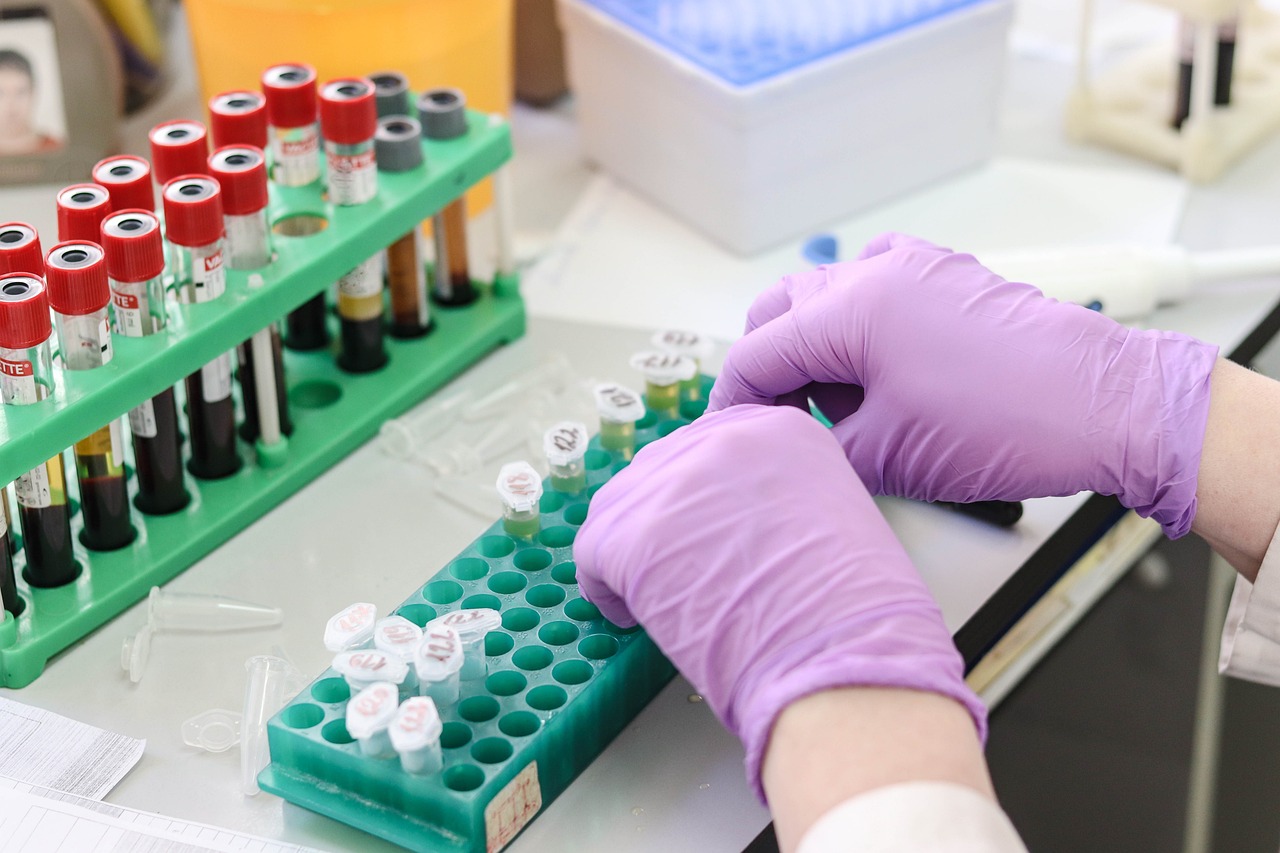
Research Proposals
Research proposals are the backbone of any scientific inquiry, acting as a blueprint that outlines the core objectives, methodologies, and significance of a study. Think of a research proposal as the map that guides researchers through the often complex landscape of their chosen field. Without this crucial document, embarking on a research journey can feel like navigating uncharted waters without a compass. A well-crafted proposal not only provides clarity but also serves as a vital tool for securing funding and obtaining ethical approvals, ensuring that the study is aligned with its overarching goals.
When crafting a research proposal, it's essential to cover several key components that convey the project's purpose and feasibility to reviewers and stakeholders. These components typically include:
- Introduction: This section sets the stage by presenting the research question and its significance.
- Literature Review: Here, you summarize existing research to highlight gaps your study aims to fill.
- Methodology: This critical part details the methods and procedures you will use to conduct your research.
- Budget: A transparent budget allows reviewers to understand the financial aspects of your project.
Each of these elements plays a pivotal role in ensuring that your proposal is not only comprehensive but also compelling enough to capture the interest of funding bodies and ethical review boards. However, crafting a proposal is not without its challenges. Common mistakes can lead to proposals being rejected or underfunded. For instance, vague objectives can leave reviewers scratching their heads, while inadequate descriptions of the methodology can raise red flags about the feasibility of the project. Therefore, it's crucial to be as clear and specific as possible, providing a detailed roadmap that reviewers can easily follow.
In summary, a well-structured research proposal is essential for successfully launching a research project. It lays the groundwork for what is to come, ensuring that all parties involved have a clear understanding of the study's aims and methods. By avoiding common pitfalls and focusing on clarity and detail, researchers can significantly enhance their chances of approval and funding, ultimately paving the way for impactful discoveries.
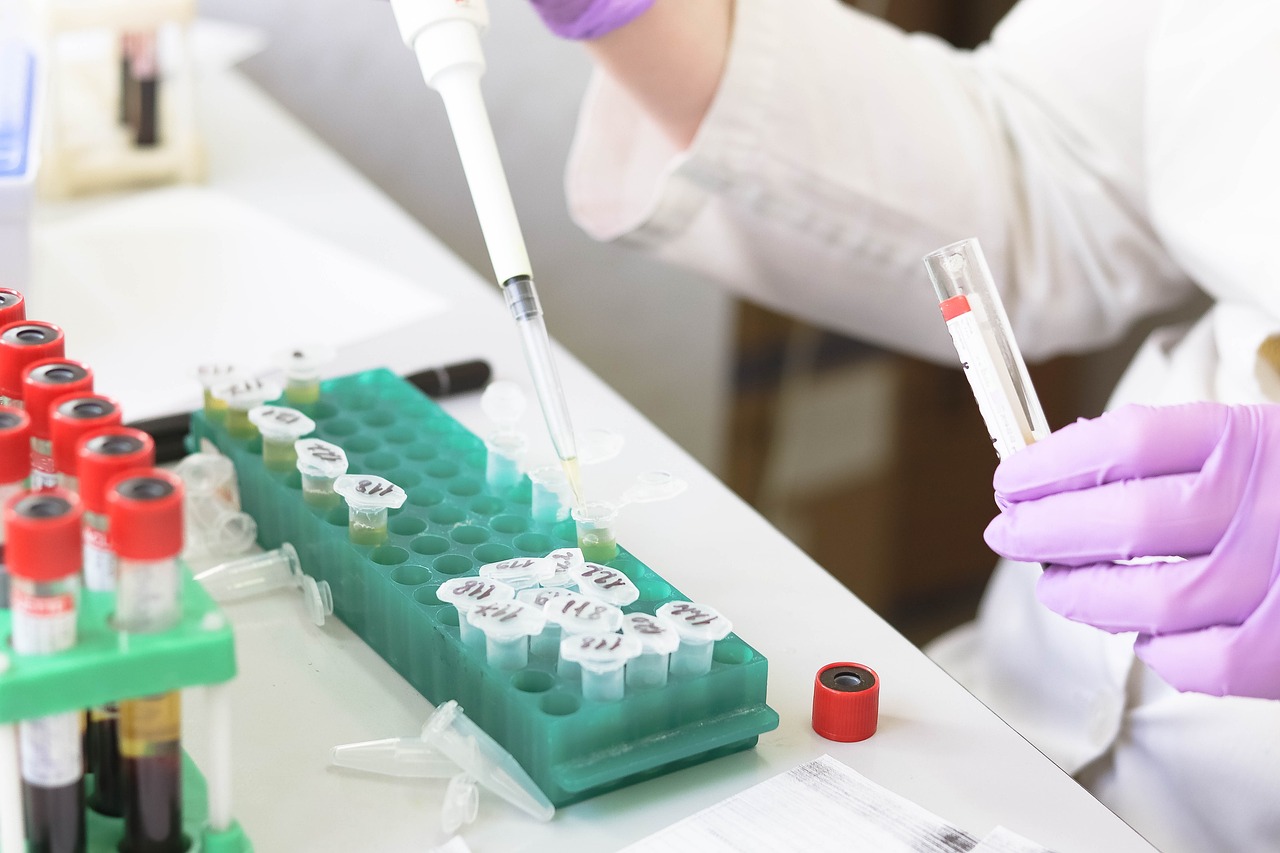
Components of a Proposal
When diving into the world of research proposals, it's essential to understand that a well-structured proposal serves as the backbone of any successful research project. Think of it as the blueprint for a house; without a solid foundation, the entire structure risks collapsing. A comprehensive proposal not only outlines the research objectives but also provides a detailed roadmap for how those objectives will be achieved. The key components of a research proposal typically include:
- Introduction: This section sets the stage by presenting the research problem and its significance. It answers the crucial question: Why is this research important? A compelling introduction grabs the reader's attention and lays the groundwork for the entire proposal.
- Literature Review: Here, you summarize existing research relevant to your topic. This section demonstrates your understanding of the field and highlights gaps your research aims to fill. Think of it as a conversation with past researchers, acknowledging their contributions while positioning your work as the next step forward.
- Methodology: This is arguably the heart of the proposal. It details the methods you will use to carry out your research, including data collection techniques, analysis procedures, and ethical considerations. A clear methodology helps reviewers understand how you plan to achieve your objectives and ensures that your approach is sound.
- Budget: This component outlines the financial resources required to conduct the research. It should break down costs into categories such as personnel, equipment, and materials. A well-prepared budget not only shows that you have thought through the financial aspects but also demonstrates your commitment to responsible resource management.
Each of these components plays a vital role in conveying the project's purpose and feasibility to reviewers and stakeholders. By meticulously crafting these sections, you not only enhance the clarity of your proposal but also increase its chances of approval. Remember, a proposal is more than just a document; it’s a narrative that tells the story of your research journey. So, take your time to ensure that every component is well-articulated and aligns with your overall research goals.
In addition to these primary components, it's also important to consider the overall presentation of your proposal. Clear formatting, consistent terminology, and logical flow can significantly impact how your proposal is received. A proposal that is easy to read and visually appealing can make a lasting impression on reviewers, increasing your chances of securing funding or approval. So, don’t underestimate the power of good design in your technical documentation!
- What is the purpose of a research proposal? A research proposal outlines the objectives, methodology, and significance of a study, serving as a roadmap for researchers and a basis for funding and ethical approvals.
- How long should a research proposal be? The length can vary depending on the requirements of the funding body or institution, but typically, proposals range from 5 to 20 pages.
- What common mistakes should I avoid in a research proposal? Common pitfalls include vague objectives, inadequate methodology descriptions, and failing to follow the specific guidelines provided by the funding agency.

Common Mistakes in Proposals
When it comes to crafting research proposals, even the most seasoned researchers can stumble into a few common traps. It’s like navigating a maze; one wrong turn can lead you down a convoluted path that detracts from the core message of your proposal. First and foremost, a frequent mistake is having vague objectives. If your proposal lacks clear, specific goals, it can leave reviewers scratching their heads, wondering what exactly you aim to achieve. Think of your objectives as the North Star for your research—without them, you’re just drifting in the dark.
Another pitfall is the inadequate description of methodologies. This is akin to telling a great story without giving any context; your readers will be left confused and unengaged. A detailed methodology not only demonstrates that you have a solid plan but also assures reviewers that your research is feasible and grounded in established practices. Moreover, failing to include a comprehensive literature review can undermine your proposal's credibility. It’s essential to show that you’re aware of existing research and how your work builds upon or diverges from it.
Additionally, budget planning often trips up researchers. Many proposals either underestimate costs or fail to justify expenses adequately, leaving reviewers doubtful about the project’s viability. A well-structured budget should clearly outline each item and its necessity to the research, much like a recipe where every ingredient has its purpose.
Lastly, neglecting to adhere to formatting guidelines can be a dealbreaker. Research proposals often have specific requirements regarding font size, margins, and structure. Ignoring these can make your proposal look unprofessional and may even lead to it being dismissed outright. To avoid these common mistakes, consider the following:
- Set clear, measurable objectives that guide your research.
- Provide a detailed methodology that outlines your research process.
- Conduct a thorough literature review to establish context.
- Prepare a realistic and justified budget.
- Follow all formatting guidelines meticulously.
By steering clear of these common mistakes, you’ll not only enhance the clarity and professionalism of your proposal but also significantly increase your chances of securing funding and approvals. Remember, a well-crafted proposal is your first step toward impactful research!
Q: What is the most important part of a research proposal?
A: While all components are crucial, the objectives and methodology sections are often seen as the most critical. They outline what you aim to achieve and how you plan to do it, serving as the backbone of your proposal.
Q: How can I improve my literature review?
A: To enhance your literature review, ensure that you cover a wide range of sources, including recent studies, and clearly relate them to your research question. Structuring it thematically can also help in presenting a coherent narrative.
Q: What should I do if my proposal gets rejected?
A: Take the feedback provided by reviewers seriously. Analyze their comments, make necessary revisions, and consider seeking advice from colleagues or mentors before resubmitting.
Q: How long should a research proposal be?
A: The length of a research proposal can vary depending on the guidelines provided by the funding body or institution. Generally, proposals range from 5 to 15 pages, but always check specific requirements.

Research Protocols
Research protocols are the backbone of any scientific study, acting as a detailed blueprint that outlines the specific procedures and methodologies to be followed. Think of it as the instruction manual for a complex piece of machinery; without it, the chances of missteps and errors increase significantly. A well-structured protocol not only ensures consistency throughout the research process but also promotes adherence to ethical standards. This is crucial, especially in studies involving human or animal subjects, where ethical considerations are paramount.
At its core, a research protocol serves several essential functions:
- Guidance: It provides clear instructions on how to conduct the study, detailing every step from recruitment of participants to data collection and analysis.
- Compliance: It helps researchers comply with regulatory requirements and institutional policies, thereby safeguarding the integrity of the research.
- Transparency: A well-documented protocol enhances transparency, allowing others to understand and replicate the study if needed.
- Accountability: It holds researchers accountable for their methods, ensuring that they adhere to the established guidelines and ethical standards.
Creating a research protocol involves several key elements. These typically include:
| Element | Description |
|---|---|
| Study Title | A concise title that reflects the main focus of the research. |
| Objectives | Clear and measurable goals that the research aims to achieve. |
| Study Design | The overall strategy, including whether it is observational, experimental, or a mixed-methods approach. |
| Methods | Detailed description of the procedures, including participant selection, interventions, and data collection techniques. |
| Statistical Analysis | Plans for analyzing the data, including statistical tests and software to be used. |
| Ethical Considerations | How ethical issues will be addressed, including informed consent and confidentiality. |
By incorporating these elements, researchers can create a comprehensive protocol that not only guides them through the research process but also serves as a reference point for reviewers and stakeholders. However, it’s important to remember that a protocol is not a static document; it should be regularly updated to reflect any changes in the study design or methodology. This flexibility helps maintain the relevance and accuracy of the research documentation.
In conclusion, research protocols are vital for ensuring that scientific studies are conducted systematically and ethically. They provide a framework that supports reproducibility and enhances the credibility of research findings. Without a solid protocol in place, the research process can become chaotic, leading to inconsistencies and potential ethical breaches. Therefore, investing time and effort into developing a robust research protocol is not just beneficial—it is essential for the success of any research endeavor.

Best Practices for Documentation
When it comes to technical documentation in research, following best practices is not just a suggestion; it's a necessity. Think of documentation as the backbone of your research project. Without a solid framework, everything can quickly become chaotic and disorganized. To maintain clarity and ensure that everyone involved is on the same page, researchers should focus on a few key practices.
First and foremost, clear formatting is essential. Imagine trying to read a book where every page is formatted differently; it would be a nightmare, right? The same principle applies to research documentation. Consistent formatting helps readers navigate through the document seamlessly. Use headings, subheadings, and bullet points to break down complex information. This way, your audience can easily locate the information they need without feeling overwhelmed.
Another crucial aspect is to use standardized terminology. Research often involves a variety of disciplines, and each may have its own jargon. By adopting a common language throughout your documentation, you can minimize misunderstandings and ensure that all stakeholders, regardless of their background, can grasp your methodologies. This is especially important in multi-disciplinary projects where clear communication is paramount.
Additionally, regular updates are vital. Research is an evolving process, and as new findings emerge, your documentation should reflect these changes. Think of it as maintaining a garden; if you neglect it, weeds will take over, making it difficult for your plants to thrive. Regularly revisiting and revising your documentation ensures that it remains relevant and accurate. This not only helps in maintaining the integrity of your research but also makes it easier for others to follow your work in the future.
Moreover, effective documentation should also include a version control system. This is akin to keeping track of different drafts of a novel. By documenting changes and updates, you can easily revert to previous versions if needed, and it allows others to see the evolution of your research. A simple table can help illustrate this:
| Version | Date | Changes Made |
|---|---|---|
| 1.0 | 2023-01-15 | Initial draft completed. |
| 1.1 | 2023-02-20 | Added literature review section. |
| 1.2 | 2023-03-10 | Revised methodology for clarity. |
Lastly, fostering collaboration among team members cannot be overstated. When multiple researchers are involved, effective documentation practices ensure that everyone is aligned and informed. This can be achieved through shared platforms where all team members can contribute, review, and comment on the documentation. Think of it as a group project in school; when everyone contributes and communicates effectively, the final product is usually much stronger.
In conclusion, implementing these best practices in technical documentation is essential for enhancing the usability and accessibility of research materials. By focusing on clear formatting, standardized terminology, regular updates, version control, and collaboration, researchers can create a robust documentation framework that supports their work and makes it easier for others to follow their methodologies.
- What is the purpose of technical documentation in research? Technical documentation serves to provide clarity, reproducibility, and transparency in research methodologies, ensuring that findings are credible and reliable.
- How often should research documentation be updated? Research documentation should be updated regularly to reflect new findings and changes in methodology, ensuring accuracy and relevance.
- What tools can be used for effective documentation? Specialized software like reference management tools, collaborative platforms, and document editing software can streamline the documentation process and improve organization.
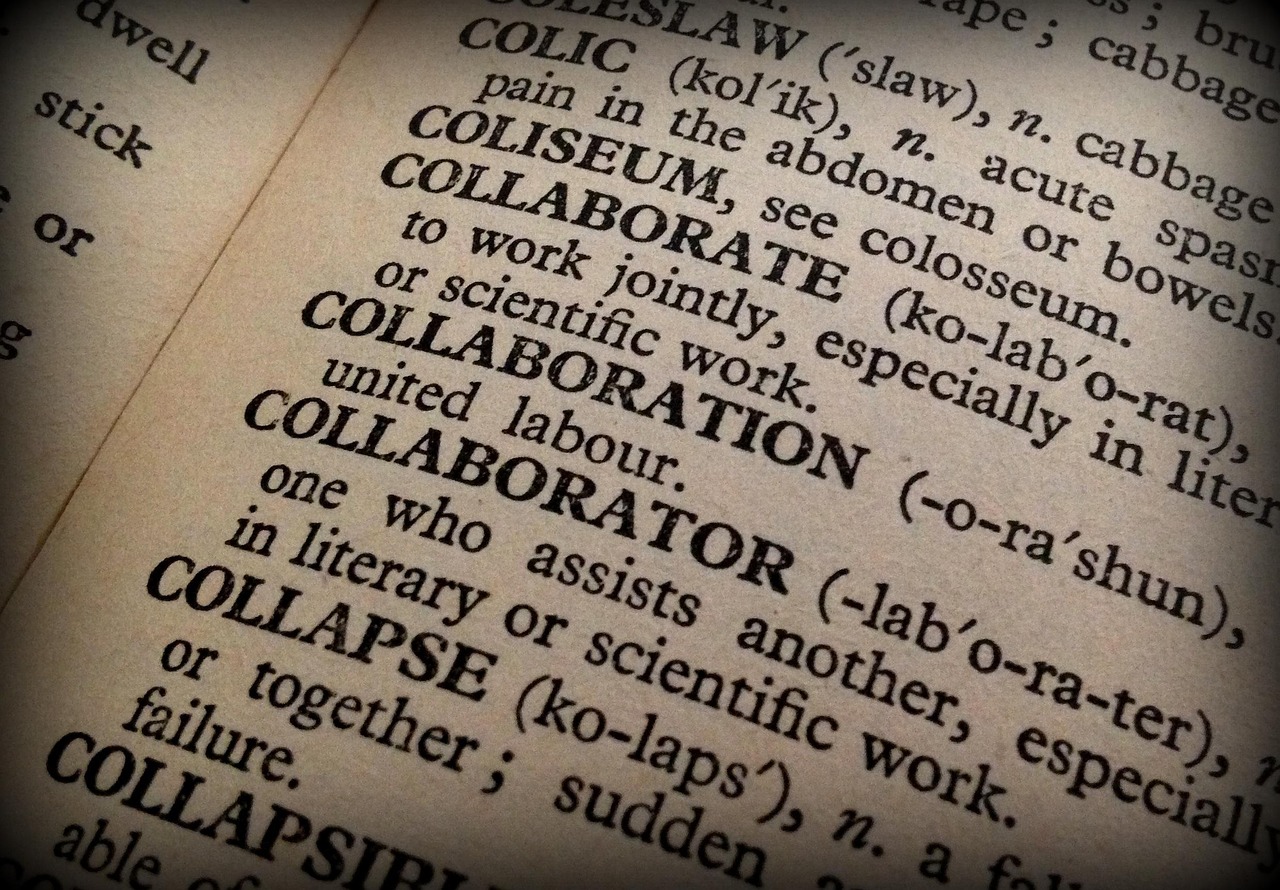
Collaboration and Documentation
In the fast-paced world of research, collaboration is not just beneficial; it's essential. When researchers from different backgrounds and areas of expertise come together, the potential for innovation and discovery skyrockets. However, this collaboration can only be as effective as the documentation that supports it. Think of documentation as the glue that holds a team together. Without it, ideas can get lost, methodologies can become muddled, and the overall integrity of the research can be compromised.
When multiple researchers are involved, clear and concise documentation plays a pivotal role in ensuring that everyone is on the same page. For instance, if one researcher is working on data collection while another is focused on analysis, both need to have access to a shared understanding of the protocols and methods being used. This not only enhances the workflow but also fosters a culture of transparency and accountability. Imagine trying to build a piece of furniture without a manual; it would be chaotic! Similarly, research without proper documentation can lead to confusion and errors.
Moreover, effective documentation practices can significantly improve communication among team members. By maintaining a central repository of documents that includes everything from meeting notes to experimental protocols, researchers can easily refer back to previous discussions and decisions. This can be particularly useful in multi-disciplinary projects where team members may not be familiar with each other's fields. A well-organized documentation system can bridge that gap, allowing everyone to contribute their expertise without feeling lost.
To achieve successful collaboration, researchers should consider the following best practices for documentation:
- Use Standardized Formats: Consistency in documentation makes it easier for all team members to understand and navigate the materials. Whether it's a research proposal or a final report, using a standardized format can save time and reduce errors.
- Regular Updates: Keeping documentation current is crucial. As research progresses, methodologies may change, and new findings can emerge. Regularly updating documents ensures that everyone is working with the latest information.
- Encourage Feedback: Create an environment where team members feel comfortable providing input on documentation. This collaborative approach can lead to improved clarity and effectiveness.
Additionally, utilizing collaborative tools can greatly enhance the documentation process. Platforms like Google Docs or specialized project management software allow multiple users to edit and comment on documents in real time. This not only streamlines the workflow but also encourages active participation from all team members. Imagine being able to see changes happen live, as if you were all in the same room! This real-time collaboration can lead to quicker decision-making and a more dynamic research process.
In conclusion, effective collaboration in research is heavily reliant on robust documentation practices. By prioritizing clear communication, maintaining organized records, and leveraging collaborative tools, research teams can enhance their productivity and ultimately contribute to more reliable and impactful findings. Remember, when it comes to research, teamwork makes the dream work, but documentation is the foundation that supports it all.
Q: Why is documentation important in collaborative research?
A: Documentation ensures that all team members understand the research methodologies and protocols, reducing confusion and enhancing productivity.
Q: What are some tools I can use for effective documentation?
A: Tools like Google Docs, Microsoft OneNote, and project management software like Trello or Asana can facilitate real-time collaboration and organization.
Q: How can I ensure my documentation is clear and concise?
A: Use standardized formats, keep documents updated, and encourage team feedback to enhance clarity and usability.

Tools for Effective Documentation
In the realm of research, having the right tools for effective documentation can be as crucial as having a well-defined methodology. Think of it like a chef needing sharp knives and quality ingredients to whip up a gourmet meal. Without the right tools, even the best recipes can fall flat. So, what are some of these essential tools, and how can they enhance your research documentation? Let's dive in!
First off, utilizing specialized software can significantly streamline the documentation process. Tools like Microsoft Word or Google Docs are staples for many researchers, but they can be limited when it comes to collaboration and version control. This is where more advanced tools come into play. For instance, platforms like Overleaf allow researchers to write and collaborate on documents in LaTeX, which is particularly useful for those in the sciences and engineering fields. The beauty of Overleaf lies in its ability to manage references and citations seamlessly, making your documentation not just effective but also professional.
Another powerful tool is Notion, which serves as an all-in-one workspace. Researchers can create databases, take notes, and manage projects all in one place. This versatility is essential for keeping everything organized, especially when juggling multiple projects. Notion allows you to create templates for your research proposals, protocols, and reports, ensuring consistency across all your documentation.
For those who prefer a more visual approach, tools like Miro or Lucidchart can help in creating flowcharts and diagrams that outline methodologies and processes. Visual aids can often communicate complex ideas more effectively than text alone, making them a valuable addition to your documentation toolkit. Imagine trying to explain a complicated process without a diagram—it's like trying to navigate a city without a map!
Moreover, cloud storage solutions such as Dropbox or Google Drive are indispensable for sharing documents among team members. These platforms not only facilitate easy access but also ensure that everyone is working from the latest version of a document. This real-time collaboration can prevent the frustrating back-and-forth emails that often accompany research projects.
Lastly, it's essential to remember the importance of regular updates and maintenance of your documentation. Using tools that allow for easy version tracking and comments can make this process much smoother. For instance, GitHub isn't just for coding; researchers can use it to track changes in their documents, making it easier to revert to previous versions if necessary.
In summary, the tools you choose for documentation can significantly impact the efficiency and clarity of your research. By leveraging the right software and platforms, you can enhance collaboration, maintain organization, and ultimately produce more effective documentation. So, whether you're drafting a research proposal or detailing your methodology, make sure you're equipped with the best tools available!
- What is the most important tool for research documentation?
While it depends on your specific needs, tools like Google Docs and Overleaf are widely regarded for their collaborative features. - How can I ensure my documentation is up-to-date?
Regularly review and update your documents, and consider using version control tools like GitHub to track changes. - Are there free tools available for documentation?
Yes! Many tools like Google Docs, Notion, and Dropbox offer free versions that are quite powerful for research documentation.
Frequently Asked Questions
- What is the purpose of technical documentation in research methodology?
Technical documentation serves as a roadmap for researchers, ensuring clarity, reproducibility, and transparency in scientific studies. It enhances the credibility and reliability of research findings, making it easier for others to understand and replicate the work.
- What are the different types of technical documentation?
There are several forms of technical documentation, including research proposals, protocols, reports, and manuals. Each type plays a specific role in guiding researchers through their methodologies and ensuring compliance with established standards.
- What should be included in a research proposal?
A research proposal typically includes key components such as the introduction, literature review, methodology, and budget. These elements are crucial for conveying the project's purpose and feasibility to reviewers and stakeholders.
- What are common mistakes to avoid in research proposals?
Common pitfalls include vague objectives, insufficient methodology descriptions, and lack of clarity in the project's significance. Avoiding these mistakes is essential for crafting a compelling proposal that effectively communicates the study's value.
- How do research protocols contribute to a study?
Research protocols provide detailed procedures and methodologies that must be followed during a study. This ensures consistency and adherence to ethical standards throughout the research process, which is vital for obtaining reliable results.
- What are best practices for maintaining technical documentation?
Best practices include maintaining clear formatting, using standardized terminology, and regularly updating documents. These practices enhance the usability and accessibility of research documentation for all stakeholders involved.
- How does collaboration impact documentation in research?
Collaboration among researchers requires effective documentation practices to enable seamless communication and a shared understanding of methodologies. This is especially crucial in multi-disciplinary projects and team-based research efforts.
- What tools can help with effective technical documentation?
Utilizing specialized tools and software for technical documentation can streamline the process, improve organization, and facilitate easier sharing and collaboration among research teams. These tools can significantly enhance the overall efficiency of documentation efforts.

